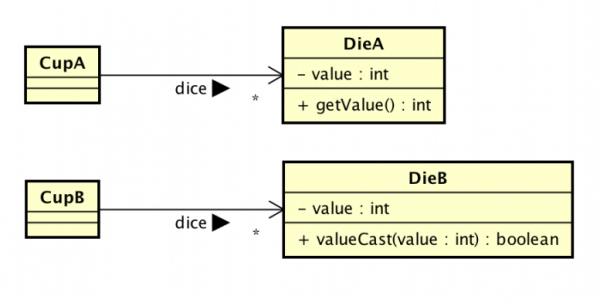Solution Variety/alx
| Solution Variety | |
| Contributors | Christian Köppe, Ralph Niels, Robert Holwerda, Lars Tijsma, Niek Van Diepen, Koen Van Turnhout, René Bakker |
|---|---|
| Last modification | June 6, 2017 |
| Source | Köppe, Niels, Holwerda, Tijsma, Van Diepen, Van Turnhout, and Bakker (in press 2015)[1][2]; Köppe et al. (2016)[3] |
| Pattern formats | OPR Alexandrian |
| Usability | |
| Learning domain | |
| Stakeholders | |
You want to Use Student Solutions (Use Student Solutions) for discussing your subject matter. You think about applying Compare Solutions (Compare Solutions) as a good basis for the discussion.
A single solution hardly ever contains everything that is worth focussing on and comparing a lot of solutions can become repetitive and take too much time.
Usually, students will have come up with very different solutions to the stated problem. Each solution has its own interesting aspects: things that have gone well can be interesting to highlight, but often you will want to focus on common mistakes too. If you pick random solutions you may miss important aspects.
To make sure that you highlight all interesting aspects in the solutions, you have to prepare a class by looking at all work handed in. This may take more time than is available.
It also takes too much time during the in-class meeting to discuss all solutions, especially in a bigger class. Furthermore, similar approaches will probably pop up in different solutions, which makes discussing them repetitive and probably not very useful.
Therefore: discuss a selection of solutions with great variety.
It is better to make a selection of the solutions, so that every aspect that you want to discuss in class, is represented in at least one solution. By discussing the aspects of the subject matter using actual solutions, you will show that they are real (in the sense that they apparently show up in the work of students).
To make sure that you catch all interesting things about the solutions, you have to prepare well: you have to at least quickly scan each solution, but this may not be sufficient. You also need to be aware of the variety of approaches the students take when working through the preparation material.
Not always everything that you want to discuss about the subject matter can be found in the handed in solutions. In this case, you have to elaborate on the subject matter by other means, e.g. applying Add Value Beyond Feedback (Add Value Beyond Feedback).
In the first year course "Object Oriented Program Development" at HAN University of Applied Sciences, students learn to write programs in Java using basic principles from the field of object orientation. In one of the assigments, students are to design and implement a simple dice gambling game, involving a number dice of dice and a cup that holds the dice. Students take various approaches: some decide to let the die communicate the number of pips on the rolled side, while others equip the die class with a boolean method that answers the question whether or not a certain value was cast. This difference in approach is a very interesting one to discuss responsibility of Java classes. The example is especially interesting to students because they brought up the difference themselves (although they were not aware of it before the teacher emphasized the difference). The figure above shows simplified class diagrams representing the two approaches.
References
- ↑ First mentioned in Köppe, C., Niels, R., Holwerda, R., Tijsma, L., van Diepen, N., van Turnhout, K., Bakker, R., (2015). Flipped Classroom Patterns - Designing Valuable In-Class Meetings. In Proceedings of the 20th European Conference on Pattern Languages of Programs (EuroPLoP 2015). New York:ACM.
- ↑ Köppe, C., Niels, R., Holwerda, R., Tijsma, L., Van Diepen, N., Van Turnhout, K., & Bakker, R. (in press 2015). Flipped Classroom Patterns - Using Student Solutions. In Proceedings of the 22nd Conference on Pattern Languages of Programs (PLoP 2015). New York:ACM.
- ↑ Patlet also published in Köppe, C., Niels, R., Bakker, R., & Hoppenbrouwers, S. (2016). Flipped Classroom Patterns-Controlling the Pace. In Proceedings of the 10th Travelling Conference on Pattern Languages of Programs (VikingPLoP 2016). New York:ACM.
